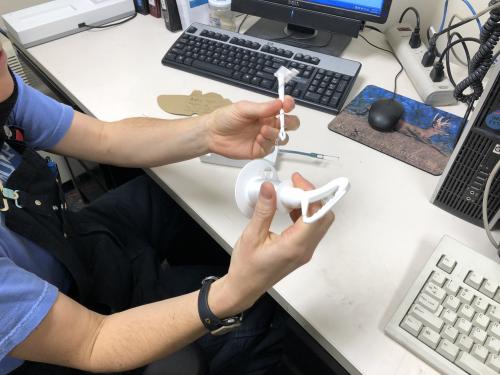Today I helped meteorologist, Katie Koster, launch a weather balloon. Katie is a molecular biologist by training, but now finds herself staying for the winter to launch weather balloons from the South Pole Station.
Every day at 10:00 A.M. and 10:00 P.M. a balloon is launched from the South Pole Station and is synchronized with other weather stations across the continent to map out weather. The balloon lifts up a sensor that measures temperature, pressure, and humidity. The GPSA Global Positioning System (GPS) is a satellite-based navigation system used to track the location or position of objects on the Earth’s surface. unit attached to the balloon allows it to calculate the wind speed and direction. This information is useful to pilots and other types of transportation around the continent.

The latex balloon weighs 350 grams and is inflated with helium. This gas is much less dense than the air at the South Pole so the balloon will rapidly pull the weather sensor up through the atmosphere until the balloon pops and the sensor stops transmitting data as it falls back to earth.

Katie let me keep the data from the weather balloon launch so I can bring it back to show my students. It reached 80,373 feet! The U.S. Antarctic Program provides lots of opportunities for citizen science projects and ways for students to get involved with weather research. Earth to Sky Calculus is a great tool to help high school students carry out balloon-based science.


Comments